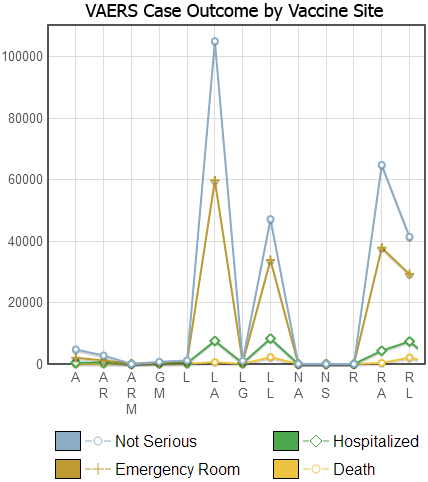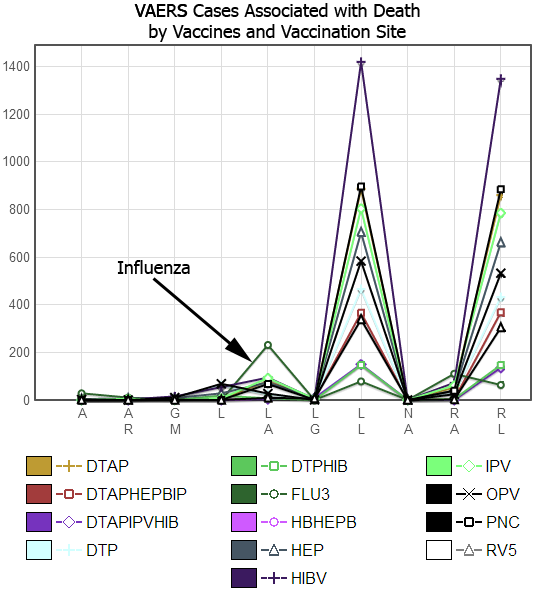
Information Center
Your Health. Your Family. Your Choice.
 |
National Vaccine Information Center Your Health. Your Family. Your Choice. |
The MedAlerts Blog |
VAERS cases have all kinds of information in them. One piece of information is the site of the vaccine: where the injection was given on the patient. Are there any patterns that can be found there?
Before examining the VAERS data, let me point out that a recent paper suggest that the DTP vaccine should be given in the leg, claiming that shots in the leg are less likely to cause minor injection-site reactions.
Now let's look at the VAERS data. Make a graph of Vaccine Site and Outcome Category. This will show how the different vaccine sites relate to the different levels of severity (from Not-Serious all the way to Death). Here is what you get:

Only four vaccination sites appear commonly and are mentioned specifically on intake forms. These sites are: LA (left arm), LL (left leg), RA (right arm) and RL (right leg). These four choices are the only ones with significant numbers in the VAERS data.
There are two things to note about this graph:
Does this mean it is more dangerous to get a vaccine in your leg? Are there specific vaccines responsible? Let's explore the injection sites more closely in the cases where the patient died. Make a graph of Vaccine Site and Vaccines, then set Died to "yes" in Section 4 of the search form. This will show which vaccines contributed to the problem of leg-site injections and death.

So the above mentioned paper is correct: to avoid minor vaccine reactions (such as injection-site soreness) a shot in the leg is probably the better choice. But many more serious reactions happen when the shot is in the leg. VAERS data suggests that a shot in the arm might be better at keeping you alive.
As always, you should discuss these issues with your physician before making any decision.
Copyright ©
2025 National Vaccine Information Center. All rights reserved.
21525 Ridgetop Circle, Suite 100, Sterling, VA 20166